Publications
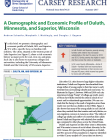
August 1, 2017
In this brief, we present a demographic and economic profile of Duluth, MN, and Superior, WI, with a specific focus on families with children. The cities, situated at the western point of Lake Superior (see Figure 1), share a rich economic history as major ports for coal, iron ore, and grain. Each city is also home to numerous colleges and universities, including the University of Minnesota-...
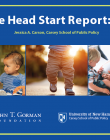
July 25, 2017
Founded in 1965, Head Start is designed to promote “school readiness of children under 5 from low-income families through education, health, social, and other services.”1 Created in 1994, Early Head Start focuses specifically on the youngest children—those under age 3, and pregnant women—and provides “early, continuous, intensive, and comprehensive child development and family support services to...
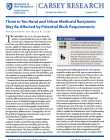
July 6, 2017
The Affordable Care Act in 2010 gave states the option to expand Medicaid access to adults with incomes up to 138 percent of the federal poverty level. Thus more able-bodied and working adults have become eligible for Medicaid. In addition, several states have petitioned the federal government to have the option to enforce work requirements for those receiving Medicaid in their state.1 Specific...
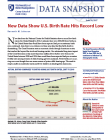
June 30, 2017
New data from the National Center for Health Statistics show a record low birth rate in the United States. In 2016, I estimate there were 600,000 fewer births in the United States than would have been expected had pre-recessionary birth rates continued. And, there is no evidence in these new data that this birth dearth is diminishing.

June 27, 2017
In the aftermath of the 2016 presidential election, commentators focused on the political polarization separating residents of urban and rural America. Certainly rural–urban differences are only one of several factors that contributed to the surprising 2016 outcome, but rural voters are rightly acknowledged as one key factor in Donald Trump’s electoral success. Yet, defining 2016 as the tale of...
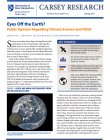
June 13, 2017
Survey researchers have observed significant political divisions in the United States with regard to public trust of science related to evolution, the environment, vaccines, genetically modified organisms, and other topics. Conservatives are less likely than moderates or liberals to say they trust scientists for information on any of these topics.1 Some of the widest divisions involve climate...
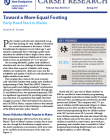
May 23, 2017
Policy makers and advocates nationwide recognize that funding for early childhood education is a crucial investment in the future. Critical foundational development occurs before age 5, and research consistently shows that high-quality early education for children leads to higher future educational attainment and lower likelihood of crime,1 and yields a return on investment of 7 to 13 percent.2...
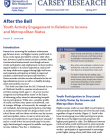
May 16, 2017
Research on narrowing the academic achievement gap between lower- and higher-income youth tends to focus on the inputs provided by schools. Little attention, however, is paid to extracurricular activities, both structured and unstructured, even though extracurricular participation and employment can have positive impacts similar to in-school experiences. Such activities keep adolescents engaged...
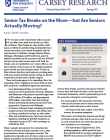
May 9, 2017
Every state in the United States with an income tax offers some kind of tax break to its older citizens. These breaks are often sizable, resulting in an elderly household owing substantially less in income taxes than a non-elderly household with the same income. In Alabama, Georgia, Hawaii, Illinois, Michigan, Mississippi, and Pennsylvania, married elderly households can have incomes well over $...
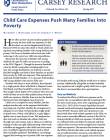
May 2, 2017
How often are low-income families pushed into poverty by their child care expenses? In this fact sheet, we use the Supplemental Poverty Measure (SPM) to assess the extent to which child care expenses are pushing families with young children into poverty. Nearly one-third (30.4 percent) of families with young children are poor. To fall under the SPM poverty line means that a family’s income would...
